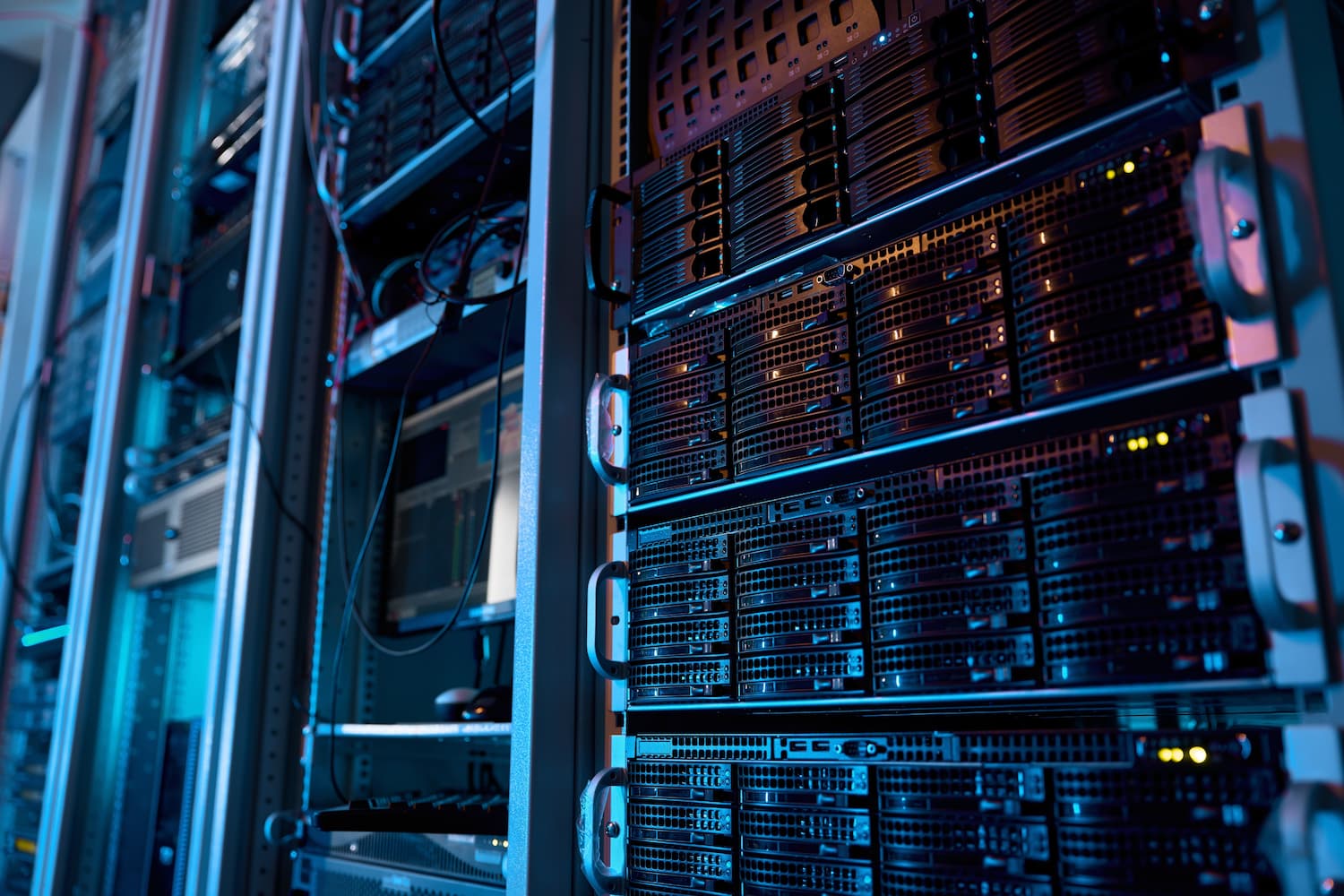A data center, also known as a data center, is a physical or virtual infrastructure that organizes, manages, and stores a large amount of data. It is essential to the operation of the internet, cloud applications, and digital services and serves as the technological brain of many organizations. Businesses, organizations, and service providers can manage their information technology needs through servers, networking equipment, storage systems, and other components found in Data CenterS.
Data centerss are an important part of the digital infrastructure of today’s world. As businesses become increasingly reliant on technology, Data Centers are essential to ensure that services are continuously available. To keep everything running smoothly, from cloud storage to social media to e-commerce, the Data centersmust be present and operating properly.
The Data Center Concept has changed a lot in recent decades. Originally, they were simply rooms with gigantic computers, but today they are massive infrastructures that handle an almost infinite amount of data. Data centers have become an essential part of the contemporary world due to the expansion of the internet and the digital revolution.
The Evolution of the Data Center:
The Data Center Concept It is not new. Since the invention of the first computers, there has been a need to organize and protect the systems that store and process data. Below, we will briefly analyze the evolution of the Data centersthroughout history:
The beginnings: When the first mainframe computers were installed in large companies in the 1950s and 1960s, the need arose to have dedicated facilities to house these systems. The objective of these controlled rooms, which would later be called Data CenterThe aim of this study was to ensure that systems were safe, cooled and protected against possible failures. The beginning of data centers dates back to the time when mainframes were bulky devices that required specific conditions to function properly.
Then, with the advent of microcomputers and the rise of personal computing in the 1980s and 1990s, businesses began to adopt distributed networks of servers. This allowed organizations to diversify and decentralize their computer systems, leading to the creation of Larger and more complex data centers.
The Internet Age and E-Commerce: With the internet boom in the late 1990s, businesses began to rely more and more on online services, leading to exponential growth in demand for data centersAmazon, Google, and Microsoft began building huge Data CenterS to support your online e-commerce services and platforms.
Data Centersin the Cloud Era: In recent years, cloud computing has transformed the role of data centerss. Instead of simply storing data, the Data Centers now provide cloud services, where businesses can rent processing and storage capacity as needed. Amazon Web Services (AWS), Google Cloud Platform, and Microsoft Azure are some of the most prominent examples of Data centersin the cloud.
The Future of Data Centers: Data Centers Are Expected to Emerging technologies such as edge computing, which bring data processing closer to end users and reduce latency. Since data centers are known for their high energy consumption, an increasing focus on sustainability is expected.

Characteristics of a Data Center:
A Data Center It’s not just a building full of servers. It is designed with a number of features that make it essential for the efficient operation of IT systems. Here are some of the most important features: The first thing is that any data center should prioritize security. It should protect against physical intrusions, such as theft or vandalism, and it should have cybersecurity measures in place to prevent hacker and virus attacks. To protect stored data, modern data centers have multiple layers of security, including 24-hour surveillance, access controls, firewalls, and encryption systems. Then it would be Climate Control, IT equipment generates a significant amount of heat. If not properly managed, temperatures in a Data Center They can increase rapidly, which could damage equipment or reduce its lifespan. For this reason, the Data centersfeature advanced cooling and humidity control systems to maintain optimal operating conditions.
Data centers They are designed with redundancy to avoid service interruptions. This indicates that there are backup components for everything from network connections to power and storage. The redundant system can be activated to ensure that the Data Center Continue to operate smoothly in the event of a component failure. The Data Centers are connected to multiple high-speed internet providers, ensuring consistent and reliable connectivity. This is especially important in a world where online services need to be available 24/7 to millions of users. And finally, the ability of a Data Center To scale, or grow in size and capacity, is another crucial feature. As businesses grow and their data storage and processing needs increase, Data centersmust be able to adapt and provide additional resources efficiently
Types of Data Centers:
Below we will touch a little on the types of Data CentersThese can be categorized into several types depending on their property, the type of services they offer, and their location. For example:
- Enterprise data centers: are operated by specific organizations to manage and administer their own activities. These centers are generally within the company’s facilities and are only available for your use.
- Colocation data centers: They are operated by third parties and provide space, power, and connectivity to multiple customers. Businesses can take advantage of a company’s facilities and infrastructure. Data Center by renting space for your own servers.
- Cloud Data Centers: Cloud service providers, such as Amazon, Google, and Microsoft, operate huge data centerss distributed all over the world. These centers allow companies to use storage and computing resources over the internet, without having to physically own or manage the servers.
- Data Centers Edge: With the growth of connected devices (IoT), smaller, distributed data centers have emerged close to end users to reduce latency in data processing. These Data centerss Edge are crucial for applications that require low latency, such as autonomous vehicles, real-time video streaming, and industrial data analytics.
- Hybrid Data Centers: This model combines elements of Data Centersbusiness and cloud systems. Businesses can keep their most critical data and applications on their own Data Centers, while leveraging cloud services for applications that require scalability and flexibility.

Challenges in Data Center Management:
Although Data Centerss are critical to modern IT operations, and their management is not without its challenges. Some of the main challenges include:
- Energy Consumption: Data Centerss consume a large amount of energy, raising concerns about operating expenses and environmental impact. To address this issue, many data centers are implementing energy-efficient technologies and renewable energy sources, such as solar or wind power.
- Refrigeration: As mentioned earlier, IT equipment produces a lot of heat. Advanced cooling systems are used to prevent equipment from overheating in a Data Center, where temperature is a constant challenge.
- Cybersecurity: Data CentersThey are prime targets for cyberattacks because of the large amount of information they store. Security threats, such as ransomware attacks and data breaches, are constant risks, and security managers Data centersmust always be aware of the latest threats and security updates.
- Maintenance and Updating: IT systems must be maintained and updated frequently to avoid failures and ensure optimal performance. This may include installing new software versions, installing obsolete components and implementing new technologies.
In the contemporary digital world, data centerss are an essential infrastructure. It has evolved from simple computer rooms to sophisticated facilities that allow the storage, processing and transmission of large amounts of data. The Data Centers are the foundation of the internet and the digital economy, and their importance will only increase as emerging technologies such as artificial intelligence, the Internet of Things, and 5G become more integrated into our lives. In addition, the Data centerscontinue to innovate to meet the growing demands of the digital world, despite facing challenges in terms of power consumption, security, and maintenance.
Emerging technology trends, the growing need for sustainability, and the demand for high-performance, low-latency services will determine the future of data centerss. The Data centerswill continue to be an important part of technological innovation, the digital economy, and global connectivity.




